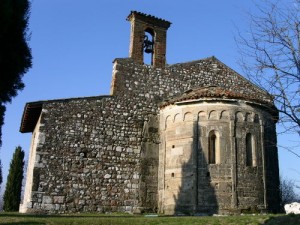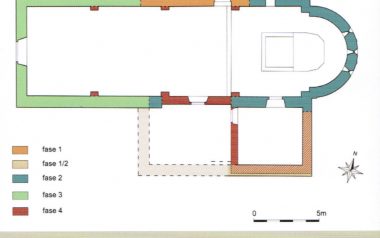Church San Zeno
The parish church San Zeno stands on a hill just outside the town of Lonato, in a position that between the tenth and eleventh centuries had to be intermediate between the inhabited centers of its territory, adjacent to the parish church of Sant’Emiliano di Padenghe.
The parish church San Zeno is named in several documents, in 1154 Pope Anastasio IV confirms it to the bishop of Verona Tebaldo, then in 1184 it is given by Pope Lucio III to the archpriest Riccardo together with the castrum vetus in which it was inserted and to the numerous land properties connected to it. Only a few meters of masonry with a thickness of one meter, visible on the southern side of the castle that fortificava the pike. The building has four construction phases. The current building has a single nave, a semicircular apse on the east side façade on the west side roof tiles, its masonry Romanesque although some scholars have identified two building phases, the first datable to the XI century, the second around the middle of the twelfth century, when the church was renovated, extended and elevated. In more recent times was then added to the compartment of the sacristy with a rectangular plan. The building apparatus of this part of the church appears to be fairly homogeneous in the lower parts made with large rocks, while in the high ones become smaller and less work. Perhaps these slight differences are due to a different phase of works, although there may be different material. On the north side you can see two walled doors and raised about half a meter from the current floor, the first is surmounted by a lunette monolithic semi-circular with a central cross in relief, the second largest, has monolithic lintel and doorposts formed from rosy stone. The interior of the church has kept the structure from Roman times and has clear signs of restructuring. The floor is newly tiled brick, the walls are covered with a layer of white plaster, three transversal arches, resting on pillars near the walls, mark the interior space into four bays. There are two fonts in stone, positioned in two niches near the southern entrance of the church, one is carved from a single block of dark stone carved with two crosses side by side, while the other is in white stone.
 foto pierbet
foto pierbet
